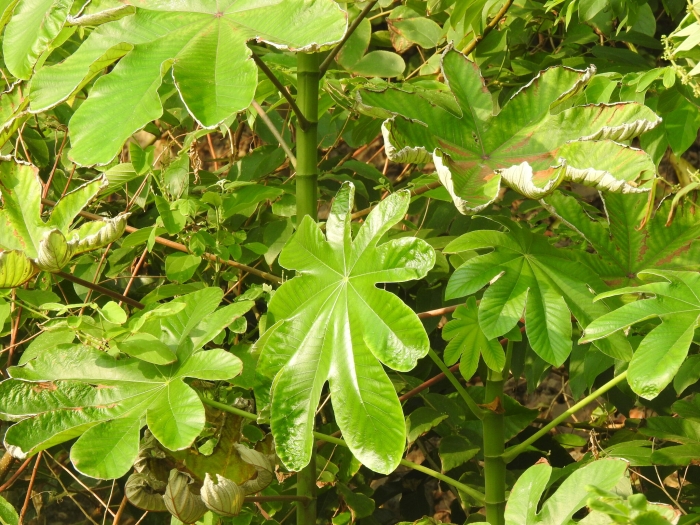Trumpet Tree
(Cecropia peltata)
Trumpet Tree (Cecropia peltata)
/
/

Duarte Frade
CC BY 4.0
Image By:
Duarte Frade
Recorded By:
Copyright:
CC BY 4.0
Copyright Notice:
Photo by: Duarte Frade | License Type: CC BY 4.0 | License URL: http://creativecommons.org/licenses/by/4.0/ | Rights Holder: Duarte Frade | Publisher: iNaturalist | Date Created: 2022-06-28T15:50:30-07:00 |

























Estimated Native Range
Summary
Cecropia peltata, commonly known as the Trumpet Tree, is a fast-growing, deciduous tree native to tropical rainforests and disturbed areas in Mexico, Central America, and northern South America. It has been introduced to other tropical regions, including Africa, Asia, and the Pacific, where it can become invasive. The Trumpet Tree can reach up to 49 feet (15 meters) in height and is notable for its large, palmately divided leaves that can span up to 24 inches (61 cm) across. The species is dioecious, meaning individual trees are either male or female, with inconspicuous flowers that are wind-pollinated. The fruits are small, multiple-seeded, and are dispersed by fruit-eating animals, especially bats.
Cecropia peltata is valued for its rapid growth and ability to quickly provide shade in tropical climates. It is often used in reforestation projects and can be found in urban settings for ornamental purposes. However, its invasive potential should be carefully considered before planting. The Trumpet Tree prefers full sun to part shade, thrives in well-drained soils, and can tolerate a range of soil types, making it relatively easy to maintain. It is not drought-tolerant and requires regular watering. There are no popular garden cultivars due to its invasive nature. Potential problems include susceptibility to leaf-eating insects and fungal diseases.CC BY-SA 4.0
Cecropia peltata is valued for its rapid growth and ability to quickly provide shade in tropical climates. It is often used in reforestation projects and can be found in urban settings for ornamental purposes. However, its invasive potential should be carefully considered before planting. The Trumpet Tree prefers full sun to part shade, thrives in well-drained soils, and can tolerate a range of soil types, making it relatively easy to maintain. It is not drought-tolerant and requires regular watering. There are no popular garden cultivars due to its invasive nature. Potential problems include susceptibility to leaf-eating insects and fungal diseases.CC BY-SA 4.0
Plant Description
- Plant Type: Tree
- Height: 15-50 feet
- Width: 10-30 feet
- Growth Rate: Rapid
- Flower Color: Green, White
- Flowering Season: Winter
- Leaf Retention: Deciduous
Growth Requirements
- Sun: Full Sun
- Water: Medium, High
- Drainage: Medium, Fast
Common Uses
Bird Garden, Butterfly Garden
Natural Habitat
Native to tropical rainforests and disturbed areas in Mexico, Central America, and northern South America
Other Names
Common Names: Pop-a-gun, Snakewood
Scientific Names: , Cecropia peltata, Ambaiba humboldtiana, Ambaiba peltata, Ambaiba propinqua, Ambaiba schiedeana, Ambaiba surinamensis, Cecropia arachnoidea, Cecropia argentea, Cecropia asperrima
GBIF Accepted Name: